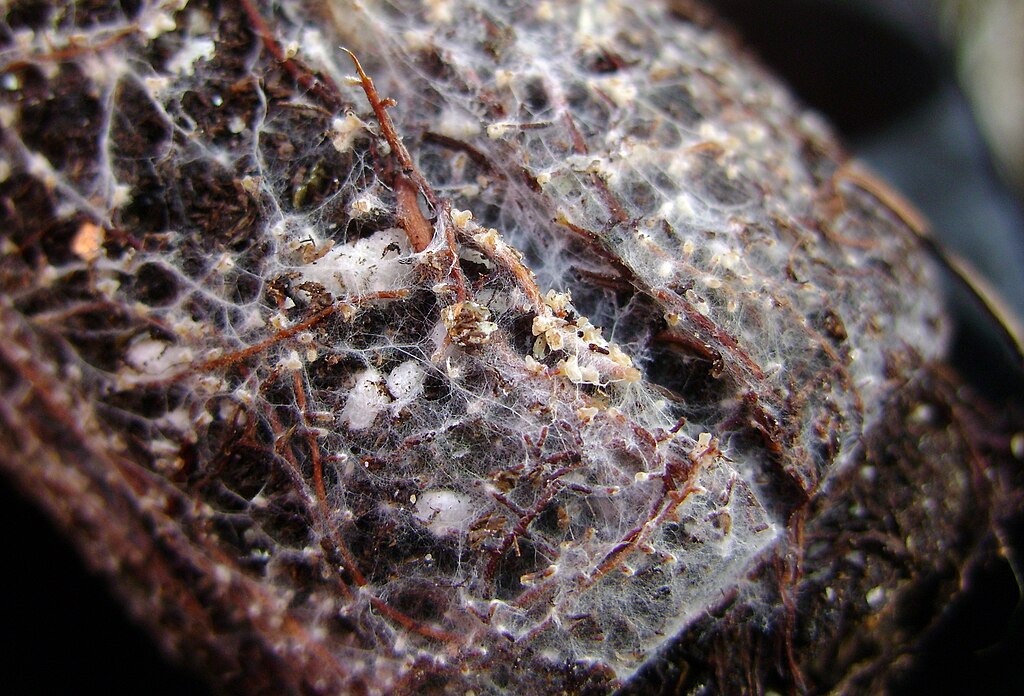The plant health pyramid is a framework that explains the links between the health of a plant and its requirements for nutritional and biological support. It was developed by John Kempf and was presented as a talk in 2021 which can be found on YouTube.
It highlights that a plant needs minerals from the soil and complex compounds from the soil biology to be healthy. In this context, healthy means to have natural and almost complete resistance to diseases and insects. Those same minerals and compounds are vital for human health.
Levels 1 and 2 of the Plant Health Pyramid rely mainly on mineral nutrition, which is relatively straightforward to manage using tools like sap analysis to identify and apply the needed nutrients. By contrast, Levels 3 and 4 highlight why fostering healthy soil biology is critical for resilient, nutrient-dense crops. Here, the focus shifts from simply adding minerals to supporting the microbial community that feeds and protects plants.
In practice, Levels 3 and 4 move us from just growing plants to growing the living system that sustains them. For more on nurturing this symbiotic soil life, check out our introduction to Soil Biology.
Four levels of plant health
The plant health pyramid consists of four levels. Each level requires a set of inputs needed to get certain outcomes and represents essential key processes for good plant health. Any shortcoming in the lower levels reduces the processes in the higher levels.
Unfortunately, most commercial growers and most crops are not even at level one of plant health care on the plant health pyramid – John Kempf
Even when commercially grown plants don’t reach level one, they can still grow and produce by relying on artificial chemicals. However, these worsen the problem over time by killing the microbiology in the soil and on the plant, and so diminish the processes in the top levels. This increases the amounts of chemicals that need to be used and severely reduces the plant’s nutritional value to us. And that has serious health consequences for us.

Level 1. Complete photosynthesis
Photosynthesis is the process in which the plant uses the blue and red rays from the sun to combine carbon dioxide from the air with water and minerals from the soil to make sugars. Photosynthesis requires magnesium, iron, manganese, nitrogen and phosphorus.
It is complete when each of these are sufficiently available and there is enough water, sunlight and carbon dioxide for the plant to make enough diverse sugars to grow itself and for exchange with the soil biology. The plant then becomes resistant to soil-borne fungi, increases its leaf size and leaf thickness, and can look quite different from what we are used to.
Level 2. Complete protein synthesis
The simple sugars from level one are then combined in the leaves with minerals and each other through a process called Protein synthesis into very large molecules. This process creates 10s of thousands different protein molecules needed for its DNA and other functions that include protecting itself against insects and diseases. In addition to the above-mentioned minerals, protein synthesis requires a wide range of minerals in small amounts such as cobalt, nickel, molybdenum, selenium, zinc, manganese, copper and many more.
When complete protein synthesis is reached, plants become resistant to insects with a simple digestive system while they are larvae and to sap sucking species by disturbing their digestive systems.

Level 3. Increased lipid synthesis
Lipids are fats and oils that all plants produce for their own basic needs. When plants have sufficient of these, they cover on their leaves with them, which can be seen as a glossy, waxy sheen on their surface. The lipids work as a shield against all the airborne bacterial and fungal pathogens. Many of the compounds or parts thereof needed to make lipids are made by the bacteria living on and around their roots and are exchanged for sugars made by the plants.
Level 4. Increased secondary metabolite synthesis
Further to those fats and oils, secondary metabolites refer to essential oils such as aromatic compounds, flavonoids, carotids and many more. These protect the plants from ultraviolet radiation and overgrazing and ward off diseases and insects by killing viruses, bacteria and insects outright. Many of the compounds or their components are made by beneficial microbes on the plant’s roots and leaves and exchanged for the plant’s sugars. As a result, plants become resistant to beetles, nematodes and viruses. Some compounds give plants their unique, individual taste, and many compounds are essential for human health.
Getting to levels three and four requires a robust and diverse biology. How to foster that is a main focus of this website.
A summarised extract of John Kempf’s talk that includes many other observations and ideas is in Building Crop Immunity: Understanding the Plant Heath Pyramid.


